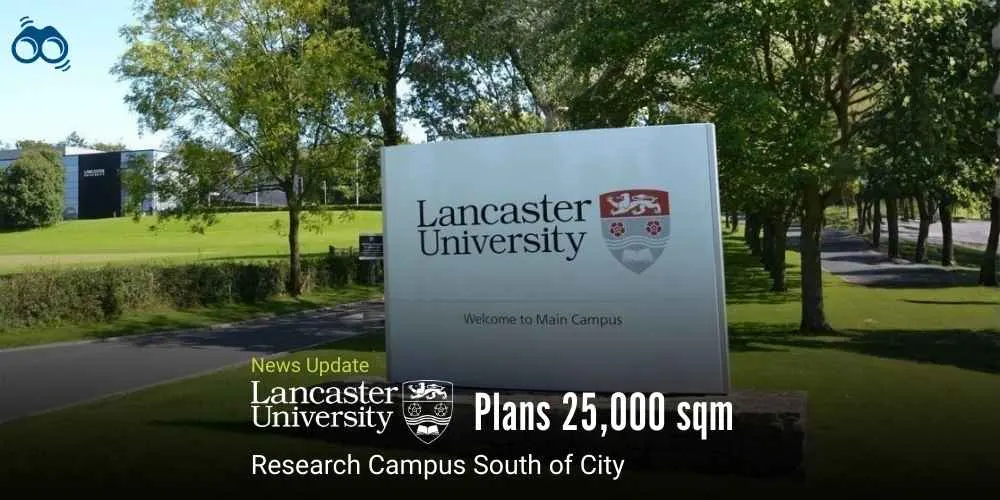£2.5m higher education investment at Essex set to train workplace‑ready scientists for NHS growth
University of Essex unveils BioSTAR-Lab as higher education investment strengthens health sector
The University of Essex will build a BioSTAR-Lab at its Colchester campus, investing £2.5 million in the project, a component of wider higher education investment. This facility was described as transforming workplace-ready scientists into the NHS and the life sciences sector. Officials explained this initiative forms part of the £88.5 million funding which has just recently been announced by the Office for Students towards making the higher education institutions in universities and colleges across England.
However, the announcement comes when the NHS is struggling with an increasing demand for qualified professionals, specifically in the areas of blood science, infection science and genomics. This initiative is directed towards filling a critical gap in the field of diagnostics, ensuring investment into university research for health benefits for communities all across the UK.
Boosting Universities Strategically
University heads hailed the BioSTAR-Lab as harbouring microbiology and cancer diagnostics facilities for bridging the gaps in detecting diseases. Prof Terry McGenity, head of the School of Life Sciences, said "Essex will be at the forefront of training students through this centre." He added that the facility would cover modern areas such as blood science, infection science, cellular science and genomics as part of the NHS priority areas.
In a development described by Prof. Silke Paulmann, executive dean for science and health, as "an exciting new chapter" for Essex, she added that this initiative will empower staff and students to create new ways for research and develop urgently needed skills.
Context of National Policy
The announcement follows the government's life sciences sector plan published in July, which articulated a 10-year mission for long-term economic growth and an NHS that is prevention-focused. It is framed as part of a more complete and broader recognition of the roles that universities play in GDP, along with their contributions to human capital and economic development.
An NHS England report released in 2023 also highlighted the need for national increases in pharmacists by as much as 55% which increases the demand for skilled health graduates. Skills Minister Jacqui Smith remarked that the cash boost would ensure that young people were trained in the latest technologies and facilities, offering them the best chances for well-paying, highly skilled jobs.
University as Economic Infrastructure
Sector analysts argued that the treatment of higher education has increasingly been used as an infrastructure engine for national productivity. Education-led development studies indicated that universities act as hubs for research and innovation and thus create an economic multiplier effect through funding by public-private higher education institutions.
Observers argued that investment in these universities boosts the GDP of the Commonwealth, emphasising the evidence on how tertiary attainment contributes to human capital accumulation. The Essex project is part of this universal trend in commonwealth tertiary education, whereby governments are recommended to treat universities as infrastructure for the economy to secure long-term returns on investment in education.
Global and Commonwealth view
According to commentators, the economic impact of universities in India, the UK, and Kenya, and even in Bangladesh, is indicative of how productive tertiary education can drive productivity, innovation, and dual FDI through developing countries. It is worth noting that authority in example from the champion of developed Commonwealth economies shows how university-led development is driving advocacy for funding from governments for universities and grants for expansion projects such as the Essex laboratory.
All policy circles debate questions like How do universities contribute to national economic growth? Can increasing higher education enrollment boost GDP? But these are answered by initiatives like BioSTAR-Lab, supporting the benefits tertiary education invests both in public health outcomes and civic life at large.
BioSTAR-Lab was thus presented as more than just a teaching establishment between the University of Essex and the UK government's investment in higher education institutions, but also as a statement regarding innovation through higher education and commitment to human capital and economic development. By aligning with the national policy priorities and global trends in commonwealth countries' higher education growth, the project was expected to deliver a long-term economic return on spending in higher education while strengthening the NHS workforce.
Editor’s Note:
The announcement of the BioSTAR-Lab at the University of Essex presents a case for how investment in higher education is being directed towards urgent national needs. With the NHS suffering shortages in blood science, infection science, and genomics, this project illustrates how universities contribute to GDP and human capital, economic development and employability of our graduates. The challenge is not just to build a new facility, it is to enhance talent in the areas most needed by society.
This project also connects to the wider life sciences strategy of the government for ten years' worth of long-term economic growth and prevention-focused NHS. By treating higher education as an infrastructure, policymakers are acknowledging that universities function as research and innovation hubs, creating an economic multiplier effect that benefits the economy and public health alike. An example of how university investment boosts productivity and strengthens community life is BioSTAR-Lab.
In turn, this project connects with the global arena. Commonwealth nations from India to Kenya have, through their universities, provided innovative support to foreign investment and education-led development. The new Essex lab fits within this trend, demonstrating how Commonwealth tertiary education might yield longer-term gains while tackling urgent issues in healthcare and skills.
Skoobuzz mentions that BioSTAR-Lab is beyond an educational building. This is a statement in support of innovation through higher education, which in turn weighs the importance of treating universities as economic infrastructure that enables the public benefits arising from human capital investment. For students, staff, and communities, it portrays a vision where education translates into better health outcomes and stronger national growth.
FAQs
1. How do universities contribute to national economic growth?
Universities build human capital by training skilled graduates, support innovation via research, and act as hubs for public‑private partnerships. These activities increase productivity, create jobs, and strengthen the wider economy.
2. Can increasing higher education enrollment boost GDP?
Yes. More students in higher education means more people gaining advanced skills. This leads to higher productivity, better wages, and stronger innovation, all of which contribute to GDP growth.
3. What is the economic case for funding universities?
Funding universities is seen as an investment in infrastructure. Well‑resourced institutions generate long‑term returns by producing skilled workers, driving research breakthroughs, and attracting foreign investment.
4. Why is tertiary education important for developing economies?
Tertiary education helps reduce poverty, supports education‑led development, and creates opportunities for innovation. It strengthens civic life and ensures that economies can compete globally by building a skilled workforce.
5. How do higher education institutions attract foreign investment?
Universities attract investment by offering research collaborations, producing highly skilled graduates, and building strong international partnerships. Their role as innovation hubs makes them appealing to global companies seeking talent and new ideas.














0 Comments (Please Login To Continue)